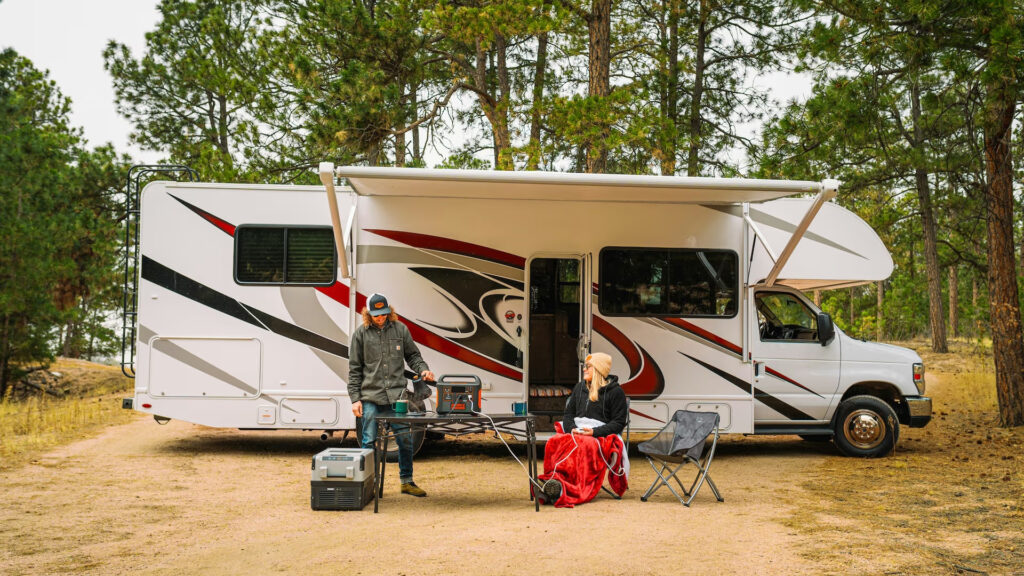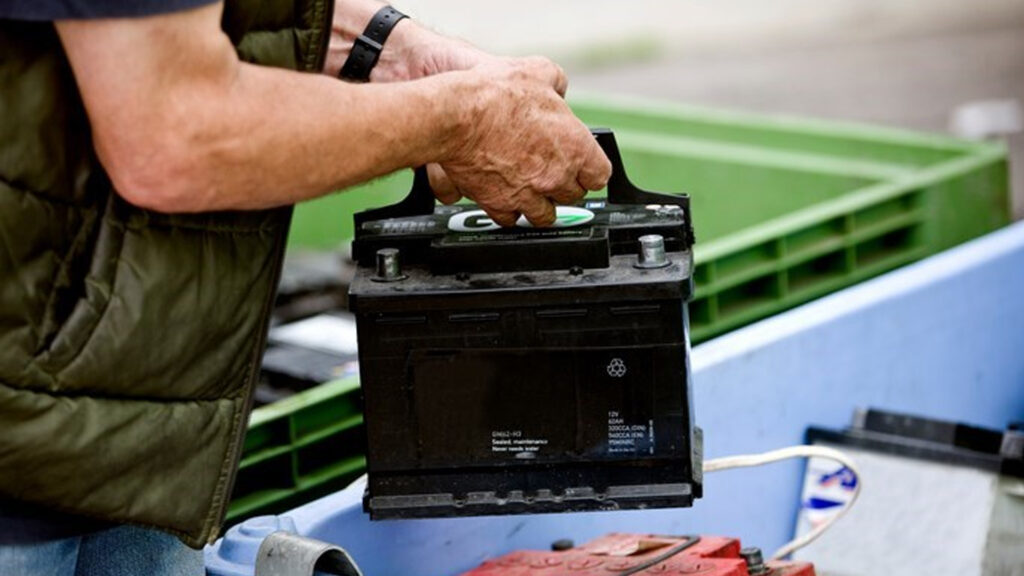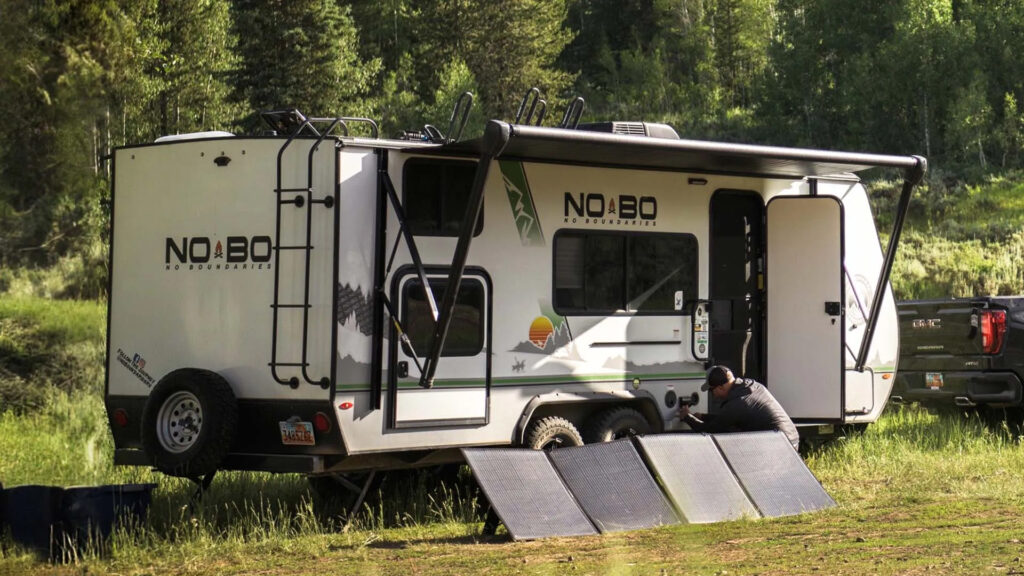Table of contents
Knowing how to charge RV batteries is essential for every RV owner. Whether you’re using shore power, solar panels, or a generator, keeping your RV battery properly charged ensures a smooth and stress-free travel experience. Nothing is more frustrating than a power failure in the middle of a camping trip, leaving you without lights, refrigeration, or essential devices. Additionally, improper charging can significantly shorten battery lifespan, leading to costly replacements. This guide will explore how to charge a camper battery effectively, covering the different types of RV batteries, the best charging methods, and important safety guidelines. Different RV setups and travel habits require different approaches to charging, so understanding your options will help you maintain a reliable and efficient power source for your adventures.
Understanding RV Battery Types
Before learning how to charge an RV battery, it’s crucial to understand the type of battery your RV uses. Different battery chemistries require specific charging approaches, and using the wrong method can lead to reduced performance or permanent damage. Below are the three main types of RV batteries.
Lead-Acid Batteries
Traditional flooded lead-acid batteries are the most common and affordable option for RVs. While cost-effective and widely available, they require regular maintenance to function properly.
- Charging Characteristics: Lead-acid batteries charge slowly and should not be deeply discharged, as this shortens their lifespan.
- Maintenance Needs: Requires regular water level checks and topping off with distilled water.
- Lifespan: Typically lasts 3-5 years with proper care.
AGM Batteries
Absorbed Glass Mat (AGM) batteries are a step up from traditional lead-acid batteries, offering a sealed, maintenance-free alternative.
- Charging Characteristics: Faster charging than lead-acid but requires a smart charger to prevent overcharging.
- Maintenance Needs: No need for water refilling, making them easier to manage.
- Lifespan: Usually lasts 5-7 years.
Lithium (LiFePO4) Batteries
Lithium iron phosphate (LiFePO4) batteries are the most advanced option, providing superior performance and longevity.
- Charging Characteristics: Charges faster and more efficiently than other battery types.
- Maintenance Needs: Virtually maintenance-free, thanks to an internal Battery Management System (BMS).
- Lifespan: Can last over 10 years with proper care.
RV Battery Charging Methods

here are several ways to charge camper battery setups, each with its own advantages. Many RV owners use multiple methods depending on their travel style and available power sources. The most common charging methods include shore power hookups at campgrounds, which provide a steady 120V supply; solar panels, which harness renewable energy for off-grid camping; generators for backup power in remote locations; and alternators that charge batteries while driving.
Shore Power Charging
Shore power is one of the most convenient ways to charge an RV battery when staying at campgrounds with electrical hookups.
- Equipment Needed: Power converter and battery charger.
- Process: Plug into the shore power source, ensuring a secure connection.
- Pros: Reliable, consistent, and ideal for long-term stays.
- Cons: Requires access to an electrical outlet.
Generator Charging
A generator provides off-grid power and is a common method for how to charge RV batteries when camping remotely.
- Equipment Needed: Generator, power converter, or smart charger.
- Process: Start the generator, connect it to the RV, and monitor charging levels.
- Pros: Works anywhere, providing a backup power source.
- Cons: Noisy, fuel-dependent, and requires ventilation.
Solar Power Charging
Solar panels are an eco-friendly and cost-effective way to charge a camper battery over time.
- Equipment Needed: Solar panels, charge controller (PWM or MPPT), wiring.
- Process: Set up solar panels, connect to the charge controller, and route to the battery.
- Pros: Free energy, ideal for boondocking, minimal maintenance.
- Cons: Requires sunlight, slower charging in cloudy conditions.
Vehicle Alternator Charging
The alternator in a tow vehicle can provide a charge while driving, though it’s not always the most efficient method.
- Equipment Needed: Wiring harness, DC-to-DC charger for better efficiency.
- Process: Connect the RV battery to the vehicle’s alternator system.
- Pros: Passive charging while driving.
- Cons: Limited charging capacity, requires long drives for meaningful recharging.
Wind Power Charging (Optional)
Wind turbines can serve as a supplemental charging method in windy locations but are not a common primary solution.
- Pros: Can generate power when solar is unavailable.
- Cons: Limited practical application, requires steady wind.
Essential Charging Equipment

To optimize how to charge an RV battery, the right equipment is essential.
Power Converters and Inverter Chargers
- Converters: Convert shore power to charge 12V batteries.
- Inverter Chargers: Provide both AC power conversion and battery charging capabilities.
Solar Charge Controllers
- PWM Controllers: More affordable but less efficient.
- MPPT Controllers: Higher efficiency and better for larger solar systems.
DC-DC Battery Chargers
- Function: Regulates alternator charging for deep-cycle batteries.
- Benefits: Prevents overcharging and enhances charging efficiency.
Battery Charging Safety Guidelines
General Safety Precautions
- Ensure proper ventilation for lead-acid batteries to prevent gas buildup.
- Use appropriately sized wiring and secure connections.
- Monitor charging temperatures and avoid overheating.
Avoiding Overcharging and Undercharging
- Overcharging: Leads to overheating and reduces battery lifespan.
- Undercharging: Causes sulfation in lead-acid batteries, reducing capacity.
- Solution: Use smart chargers to maintain optimal charge levels.
Cold Weather Charging Considerations
- Charge lithium batteries at temperatures above freezing to prevent damage.
- Store batteries in insulated compartments during winter camping.
- Use temperature-compensating chargers when applicable.
Optimizing Your RV Battery Charging System
Assessing Your Power Needs
- Calculate daily power usage to determine necessary battery capacity.
- Balance battery bank size with charging capabilities.
- Monitor energy consumption using a battery monitor.
Combining Charging Methods
- Utilize multiple sources (solar, shore power, generator) for redundancy.
- Prioritize solar and alternator charging when off-grid to conserve fuel.
- Install an integrated battery management system for efficiency.
Upgrading Your Charging System
- Consider lithium battery upgrades for faster charging and longevity.
- Install higher-capacity solar panels for extended boondocking.
- Upgrade to an MPPT solar charge controller for improved efficiency.
Understanding how to charge RV batteries ensures you have a reliable power source for all your adventures. Whether you’re learning how to charge a camper battery through shore power, how to charge camper battery using solar panels, or how to charge an RV battery with a generator, choosing the right method based on your setup and travel style is key. By following best practices and using the right equipment, you can extend your battery’s lifespan, reduce power-related frustrations, and enjoy stress-free RVing. Keep your batteries charged and your trips powered up!
Power Up Your RV Adventure with Reliable Hookups at Black Hawk Creek!
Keeping your RV batteries charged is essential for a smooth and worry-free journey, especially on extended trips. At Black Hawk Creek RV Park & Cabins, we offer reliable full-service hookups so you can enjoy all the comforts of your RV without worrying about power. Nestled in the heart of South Dakota, our year-round park is the perfect home base for exploring iconic attractions like Mount Rushmore, the Badlands, and Rapid City. Whether you’re fine-tuning your battery setup or just looking for a hassle-free camping experience, we’ve got you covered. Book your stay today and power up your adventure with us!

